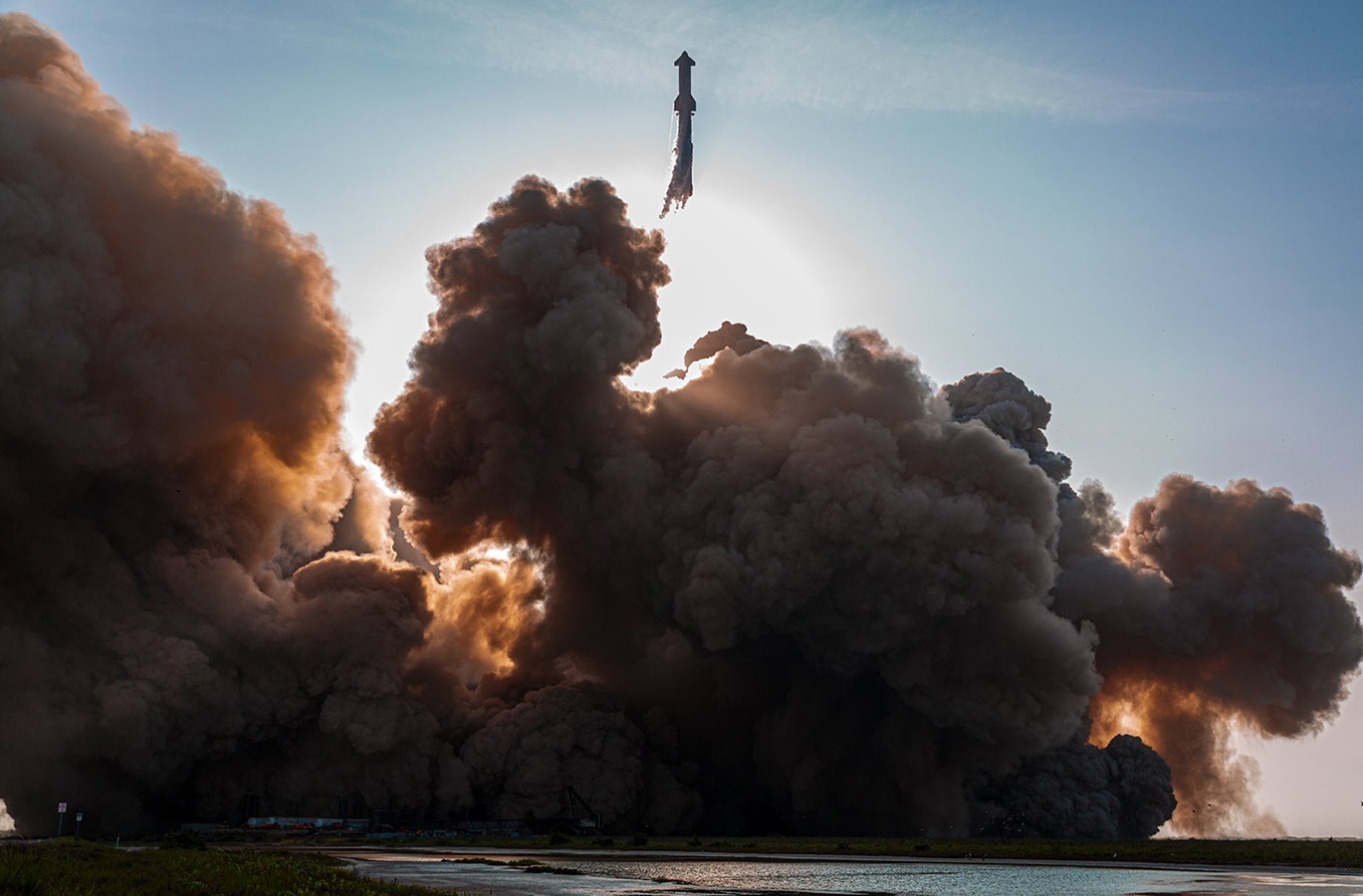Stay Up to Date
Submit your email address to receive the latest industry and Aerospace America news.
SpaceX chose to launch a Starship on April 20 before construction was completed on “a massive water-cooled, steel plate,” as CEO and Chief Engineer Elon Musk described the planned flame diverter on Twitter after the launch. Had this feature been in place, Musk suggested it would have shunted the exhaust from the Starship stack’s 33 Raptor engines away from the cement launch pad.
Instead, videos and images on social media showed debris from the launch pad coating surfaces far from SpaceX’s Starbase facility in Boca Chica, Texas, near the small city of Port Isabel, the South Padre Island tourist areas and Laguna Madre, a shallow saltwater bay noted for its bird and fish life. The U.S. Fish and Wildlife Service announced that it will inspect surrounding areas. FAA said it would lead a “mishap investigation” and would not OK a return to flight until the agency was convinced that public safety would not be affected, which it said was “standard practice.”
Musk tweeted that SpaceX “wrongly thought” that the pad made of Fondag, a cement with alumina and plastic binder in it, would survive the first launch of a fully stacked Starship.
Back in 2020, Musk tweeted: “Aspiring to have no flame diverter in Boca, but this could turn out to be a mistake.”
After the explosive liftoff, the Starship stack rose and began cartwheeling before exploding 4 minutes into the flight, ending SpaceX’s attempt to separate Starship from its Super Heavy booster so it could streak through the edge of space for a splashdown in the Pacific Ocean near Hawaii. SpaceX initially called the explosion a “rapid unscheduled disassembly” but later clarified that “the flight termination system was commanded on both the booster and ship.”
About paul brinkmann
Paul covers advanced air mobility, space launches and more for our website and the quarterly magazine. Paul joined us in 2022 and is based near Kennedy Space Center in Florida. He previously covered aerospace for United Press International and the Orlando Sentinel.
Related Posts
Stay Up to Date
Submit your email address to receive the latest industry and Aerospace America news.




